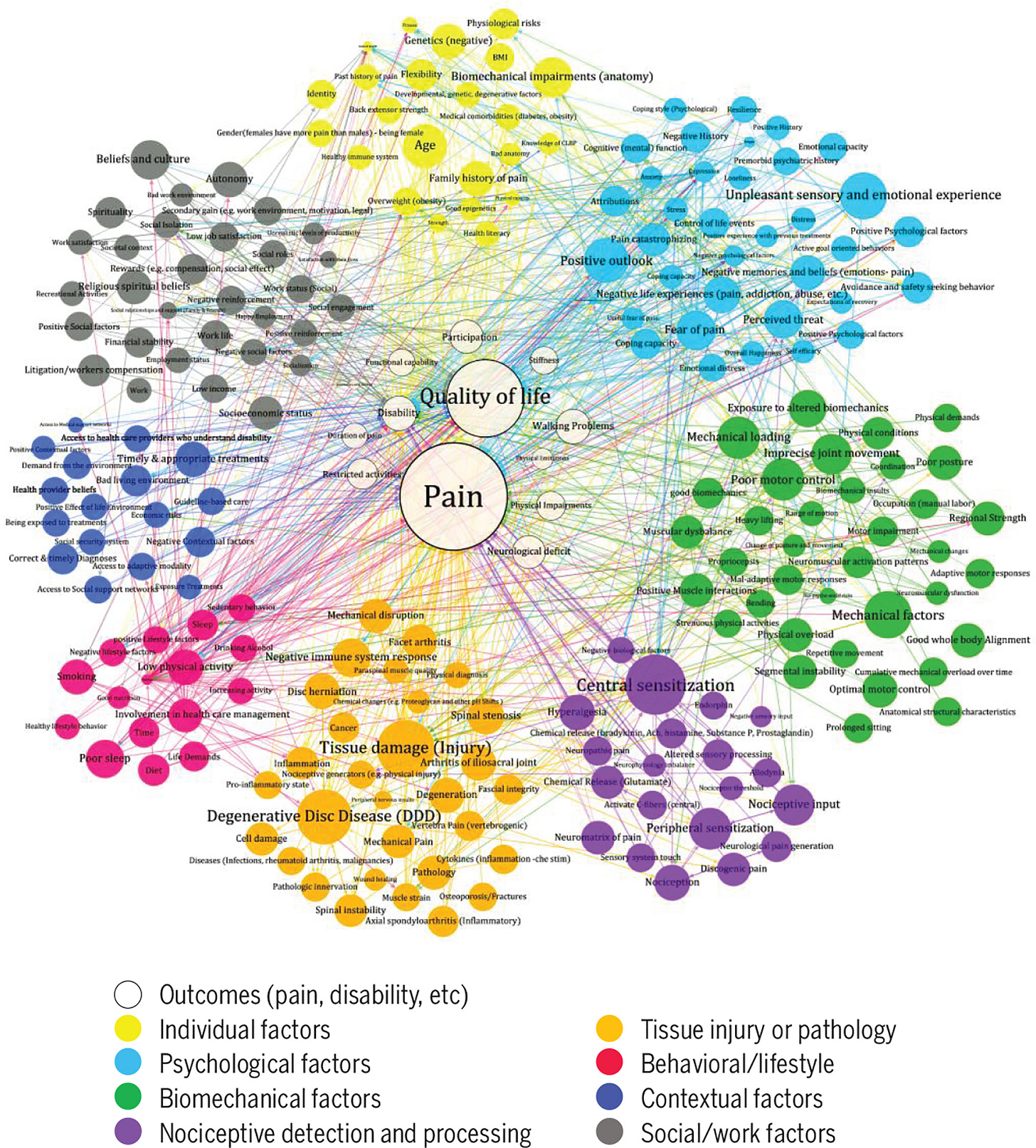In this edition of Momentum you’ll learn the cause of most non-traumatic exercise and sport injuries, you’ll learn a method to get more fit with less risk of injury, and you’ll learn an under-valued concept I use in all of my programs to get better results over the long term.
Engaging in sports and exercise is one of the healthiest things we can do for ourselves.
Regular exercise is known to improve our lifespan, how long we live, and our health-span, how healthy we are during those years.
Meeting and exceeding physical activity guidelines is associated with lower all cause mortality risk.
There may be side effects, however.
You run the risk of getting jacked, losing weight, and improving athletic performance.
Is there a risk of injury or pain with participation in sports and exercise? Sure, but it’s a small one and the benefits of regular exercise far outweigh any potential risks.
At higher exercise intensities and volumes that risk can increase, but doesn’t have to. If you’re a Momentum reader, then you probably like to push yourself physically.
Now, there is no true way to prevent all injuries.
I can’t stop you from being a klutz and tripping down the stairs at the gym or running face first through a plate glass window while playing handball.
I can help you reduce the risk of those injuries that seem to come out of nowhere. Those nagging elbows. That always stiff in the morning lower back.
The shin splints. The tennis elbow. The golfer’s elbow. The runner’s knee. All that good stuff that keeps me in business.
This article is meant for avid exercisers who continue to find themselves injured, avid exercisers who want to stay injury free, and people who may shy away from exercise due to fear of pain and injury from physical activity.
So, why do we get hurt?
I wish the answer was simple.
In truth, there are 250+ different variables with varying levels of influence that factor in to why we get injured or experience pain.
Everything from physical trauma to emotional stress to poor sleep to societal beliefs can influence injury and pain.
For today, let’s focus on some of the physical stuff. The programming and training variables that so often cause pain and injury.
The Cause of Most Non-Traumatic Exercise and Sports Injuries
We get injured when the load on our body exceeds the capacity of our tissues.
Huh?
Remember those old balsa wood bridges we made in high school? You spend a few weeks gluing together little pieces of balsa wood to make a bridge and then test the bridge’s strength by adding little weights to it.
You do all of this in front of your peers for the ultimate adolescent humiliation when your bridge collapses with the smallest challenge.
No? Just me?
Anyway, that’s kind of what I’m saying here. Whatever level of fitness you’re currently at, you have a physical threshold.
How often can you run and how fast and for how long before an injury or pain happens?
How much can I lift before the stress on my body results in an injury?
The answer is different for every single person.
Our fitness level, sleep habits, nutrition habits, non-exercise related stressors, and environment can all play a part in how much exercise and physical stress we can tolerate.
Our bodies, thankfully, are much different than balsa wood bridges made by a 14 year old who didn’t pay attention in class.
Our bodies adapt to stress, get stronger, and become more resilient if we give it the appropriate training dose and time to recover.
If the dose is too large, if we don’t have enough time to recover between exercise bouts, or a combination of the two, we run in to problems.
The old term for these types of injuries was overuse.
The new and more appropriate term is under-prepared.
Think of it like this…
You’ve never run before. To get in shape you decide to run 5 miles a day. The muscles, tendons, ligaments, and joints of your lower body are not used to the repetitive loading of running 5 miles a day. Two weeks into your new running routine you develop horrible shin pain and you can barely run for a minute before having to stop.
The muscles, tendons, ligaments, and joints were underprepared for the task.
As unprepared as I was before building my balsa wood bridge…
You didn’t overuse anything … the problem was you weren’t using anything before.
Here’s another example that I see all too often. Take your classic high school guy who’s getting into lifting for the first time. He watches videos online of people deadlifting huge weights. He sees the jacked guy at the gym deadlifting huge weight. What does he want to do? Deadlift huge weight. What will give him the confidence to finally talk to girls? Deadlifting huge weight.
So, when he’s at the gym for the 8th time in his life he tries to deadlift huge weight and hurts his back. He asked his body to do something it was wildly underprepared for.
The problem here isn’t the running. The problem here isn’t the deadlifting. People will often falsely accuse (insert injurious activity here) as the problem.
The problem was the dosage.
If our runner had chosen a plan that progressed gradually and was adjusted for their fitness level they could have avoided those shin splints.
If our young male weightlifter had slowly increased weight while continuously working on technique and allowing proper recovery between sessions he could’ve avoided that back injury.
Enter: the “toos” of exercise.
The “Toos” of Under-Prepared Injuries
Too much, too heavy, too fast, too often, too soon.
The majority of under-prepared, seemingly random onset, non-traumatic injuries occur because we ask too much of our body with inadequate time to recover.
Rapid increases in loading, volume, intensity, speed, frequency, or other variables can be too much of a dose that we are not prepared to handle yet and cannot recover from.
This usually happens over several exercise sessions as you repeatedly overload your body without giving it time to recover and adapt.
These types of injuries can happen at any fitness level.
The seasoned runner who covers 35-45 miles per week and then suddenly jumps to 65-70 miles per week can get the exact same shin splints as the newbie runner we discussed earlier.
So, should we just never challenge ourselves? Should we never push hard?
Of course not.
We must continue to challenge our body to get better, faster, and stronger but do so in a manner that we can still recover from and do so gradually.
This, is the art and science of developing effective programs.
How do we avoid the “toos?”
Smart programming, that’s how.
Here is a simple framework to gradually progress your own training without doing so much you get injured but are still doing enough to make gains.
A Simple Progression Method to Avoid the “Toos”
This may come as a shock to some of you.
But, we are humans.
Humans can heal. Humans can adapt to stress. Humans can come back bigger, stronger, and more resilient after a hard physical challenge.
But, it takes time.
Unfortunately, we do not possess the healing powers of Wolverine.
We humans must take a gradual, but still progressive approach to exercise to ensure that the load we place on the body doesn’t exceed our capacity but is still enough to force adaptation.
Huh?
We have to give ourselves an appropriate dose of exercise, then give ourselves enough time to recover from it, and then give ourselves a slightly stronger dose of exercise.
Rinse and repeat.
In the beginning of an exercise program or new activity try to apply the 10% rule to just one training variable at a time.
For weightlifting, lets say you bench pressed 100 pounds for 10 reps during your first week of training. On week 2 you can either increase the load or the volume by 10%. You could choose to gradually progress by trying to bench press 110 pounds for the same 10 reps or use the same 100 pounds for 11 reps.
For cardio, try to increase either distance, time, speed, or pace each week. If you ran 5 miles last week at a 9:00 min/mile pace try to run 5.5 miles this week at a 9:00 min/mile pace.
Again, it may seem like a small increase but it is enough to overload and get better without getting sidelined due to injury.
10% applied over 1 week seems small, but imagine progressing by 10% every single workout for a year? For 10 years?
That would be legendary progress!
My BREAKING GAINZ FOREVER and BREAKING GAINZ LITE programs have built in progression to make sure you get the results you’re looking for without setbacks from injury.
Sometimes, however, you just can’t progress by 10%. Progress isn’t always linear. Truthfully, the longer you’ve been training the less linear it becomes.
If I could just add 10% to my bench press every week for my entire life I’d be bench pressing 10,000 pounds by now. Sadly, this isn’t the case.
Sometimes we push as hard as we can and can’t even grab 1%. On these days, its important to auto-regulate our training.
A Primer on Auto-Regulation
I could, and maybe will, write an entire post about auto-regulation.
I use this concept in my own training every day and I spend time with all of my clients to make sure they understand this.
Simply put, auto-regulation is the idea of listening to your body and adjusting the program based on how you feel.
If you feel great and that 10% increase is there for this workout, awesome.
If you feel okay and can barely repeat what you did last week, that’s okay too.
If your body is screaming at you and you would kill for a rest day and a nap, then maybe you should take a day off and take a nap.
Take what’s there and over time work on raising your floor instead of always hyper focusing on your ceiling.
Being smart about how you feel can help you stay in the game for the long haul. Knowing when to push and when to take a step back is important.
Without making this article too long - let’s keep this bit on auto-regulation short and revisit it in a more formal post in the future.
Just check in with yourself and know that yes, the goal is to make progress every single workout but, sometimes it’s okay if you don’t.
Should You Avoid Exercise and Sports Because Its Dangerous?
Because my mom reads this publication, I’ll say heck no, but I would normally use a more abrasive expletive.
The same expletive I yelled when my balsa wood bridge collapsed after the first weight was added.
The risks of physical inactivity far outweigh the risks of injury from living an active life.
That sounds way worse than shin splints from progressing a running program too quickly.
Wrapping Up
Non-traumatic injuries in exercise and sport participation are typically caused by a rapid increase in intensity, volume, frequency, or load. We call these the “toos” of exercise. Gradual progression is an important part to any training program so you can make gains but also allow adequate recovery over the long term.






